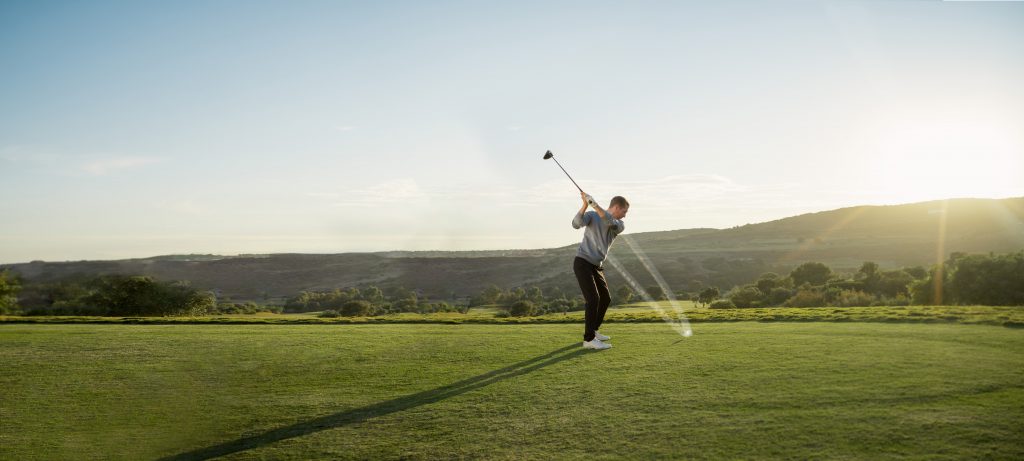Turn Raw Power into Precise Power


Power needs a harness to be any use for you.
This is true in any sport and it’s especially true in golf, where it is one of the key factors determining shot length and thus your shoot lower scores. Here are three suggestions of how to go about it in order to become better at your golf swing.
You can hit farther than you think, and, in all likelihood, you can hit farther than you currently do. That’s one truth we can risk saying about almost any golfer, even without having seen them hit. The reason is that almost all aspiring golfers don’t quite control whatever raw power they have.
So can controlled power the seemingly effortless, well-aimed and optimally dosed power that gives you the extra yards on your shot be learned.
Simply put yes.

Chain of Command –
1) The Feet transfer power from the ground, causing the Pelvis to react
2) The Pelvis then instructs the Upper Torso to react next
3) The Upper Torso instructs the hands and arms to travel on a specific path
4) The Hands bring the club to Impact Position
5) Club head at Impact has higher potential speed through impact with the golf ball.

So, what to practice
This drill practiced at home or on the range will help you to understand the correct footwork in the swing.
More reps. And then some.
The more you repeat a move over time, the more extensively your brain builds positive memory for it. This reduces the conscious effort that goes into performing whatever you are focusing on. Which in turn frees up more energy that can be allotted to the motion. And this is exactly what you want: a larger oomph available for a swing that runs on safer rails.
Lots of repetitions – even without the ball – is a key to getting technique grounded.
Feel the move.
Golf lends itself well to the analytical mind. There is no shortage of numbers and video analysis that can be gathered, so a metric-based approach to rating performance is an important part to improving your swing, yet I would be the first to encourage players to turn their gaze inward and feel the_move. Go into slow motion, if it helps, close your eyes, and observe what’s going on. A good idea (and a staple of modern training concepts) is sequencing moves from extremely slow motion to ever increasing tempo until normal or high-speed.
Remember: the feeling for the right swing move must build in much the same way as anything else you have learned in your life. It takes time. It also takes many reps …
Good players take time to feel the movement and let it sink in well.
Do not quit!
Maybe the most important bit of advice is labouring a cliché – hang in there. Be patient, give yourself and your skills time to mature. In golf, the will to improve can get you into a downright quicksand of questioning everything. Don’t let that ruin your goodwill towards your training.
Committed, focused, deliberate training almost always pays off in some aspect or other. If need be, question a lot of things, but have faith in the process. You will get there.
